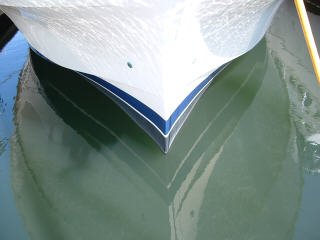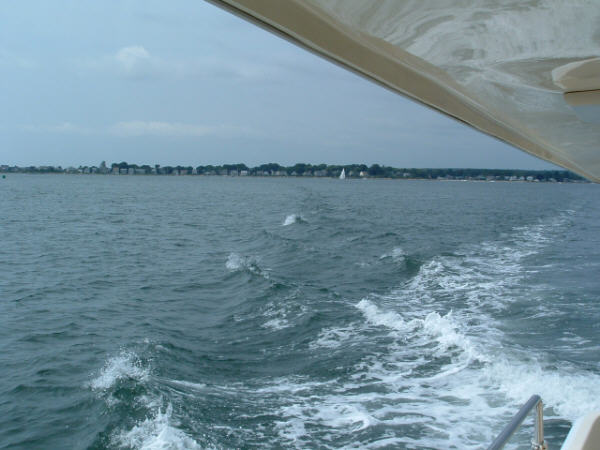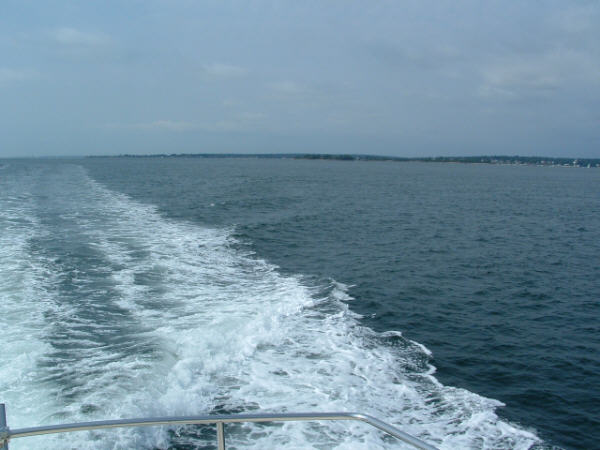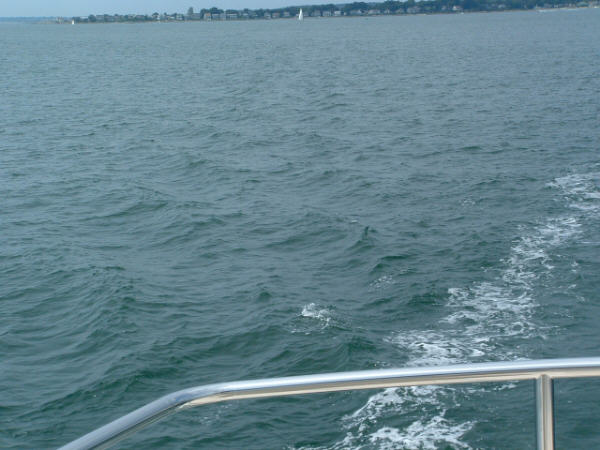The 400 is capable of a huge wake! Caution is in order whenever around small craft or floating docks. Contrary to what you might expect, the wake is at its most distructive potential when cruising rather slowly. A quick study of what is happening, as this boat moves through the water, will surprise you.
In most boats, the trough cut by the hull and backfilled by water is major source of wake. On planing hulls the bow rides above the surface and gradually carves the trench to the depth of the stern. As the water backfills, to fill the trench from each side, the water collides at the centerline behind the boat to produce a large stern wave. At slower speeds (near hull speed), the blunt nose of the bow, plow water forward, and as it tumbles off causing still a smaller bow wave then the stern wave. The opposite is true on the 400 at this slower speed. In my article on speed, I discuss the advantage of the very fine entry of this hull and the gentle concave curve used to "part the waters" at hull speed. It works exceedingly well to cut a trough, through which the hull will follow, but piles the water quite high. It's almost like a snowplow plowing up a 4" snowfall into a 18" high windrow. This produces a much larger bow wave than stern wave.
This is very evident in the picture below of the wake at 2000 RPM. You can see the line of bow waves breaking at they are too steep to support themselves. Off the rear quarter you can see the smaller sternwave in the foamy aftermath of the bow wave. These pictures do not depict the magnitude of the wave height well, but the relevant size of well formed bow wave to stern wave is very evident.
As speed increases, this concave curve in the bow works to casts aside the water rater than pile it up. This causes a total collapse of the bow wave and then the stern wave takes over as the major source of wake. The wake becomes more traditional in shape, and height, but can still be a very destructive force. The picture below is taken at 3100 RPM, which is about 12 knots with Stella Blue. As you can see, the bow wave is nothing more than foam on the water, with the major portion of the wake originating behind the boat as a stern wave.
Below is the wake as Stella Blue is slowed to 1600 RPM, which is about 7 knots. The bow wave no longer breaks, but is still well formed, and of considerable hieght. the two waves, bow wave to the left and stern wave to the right, are both individually distinguishable in this photo.




